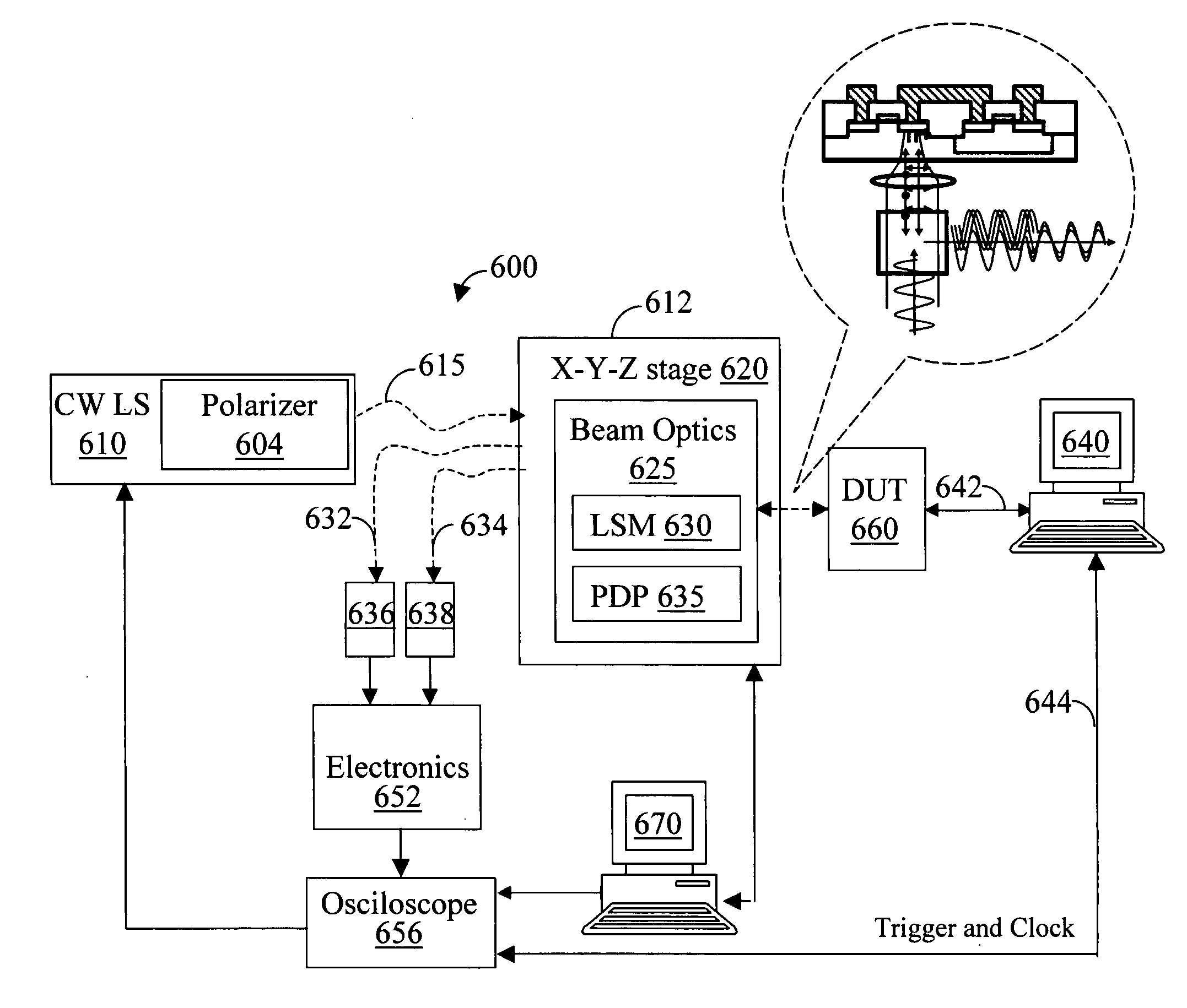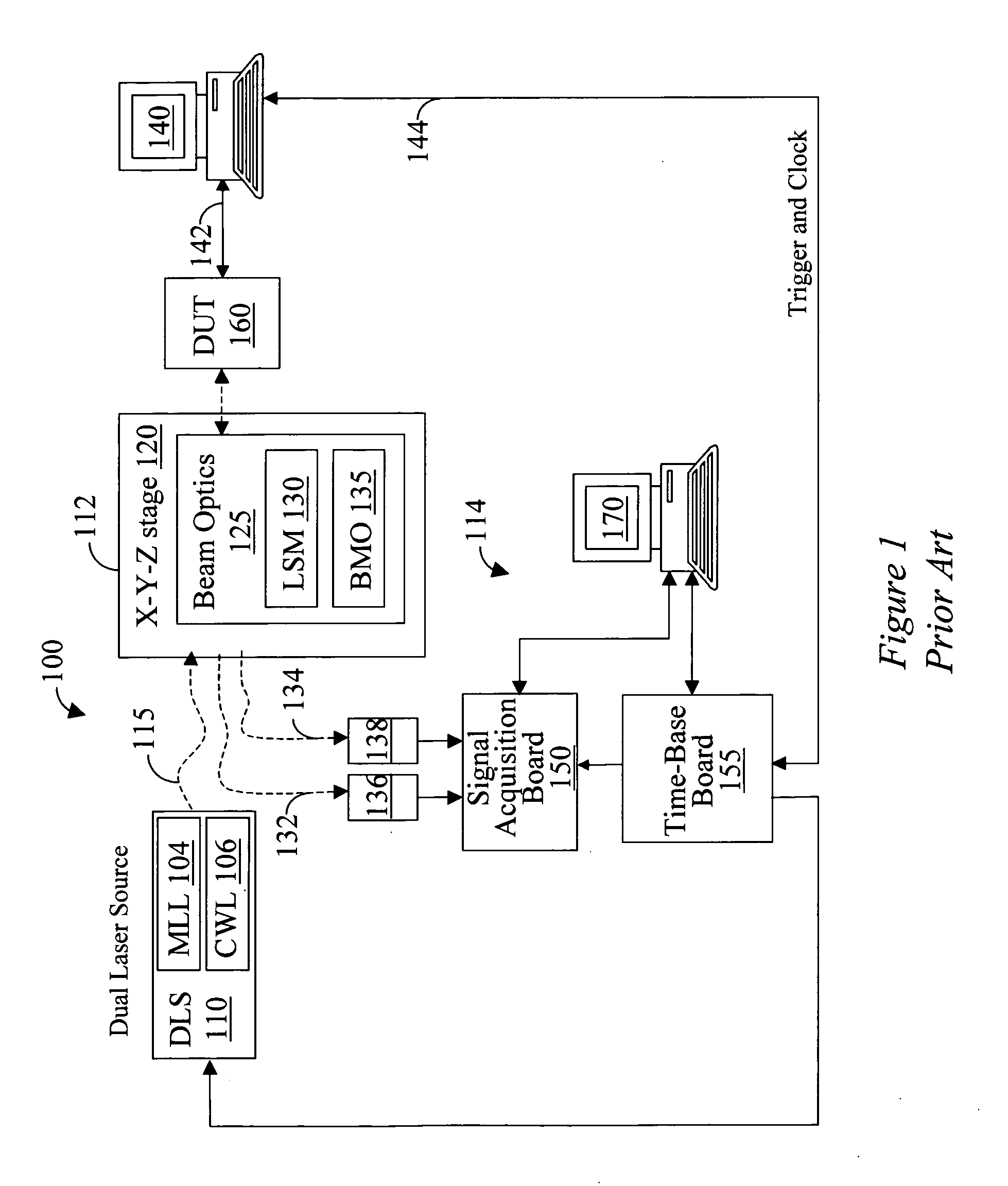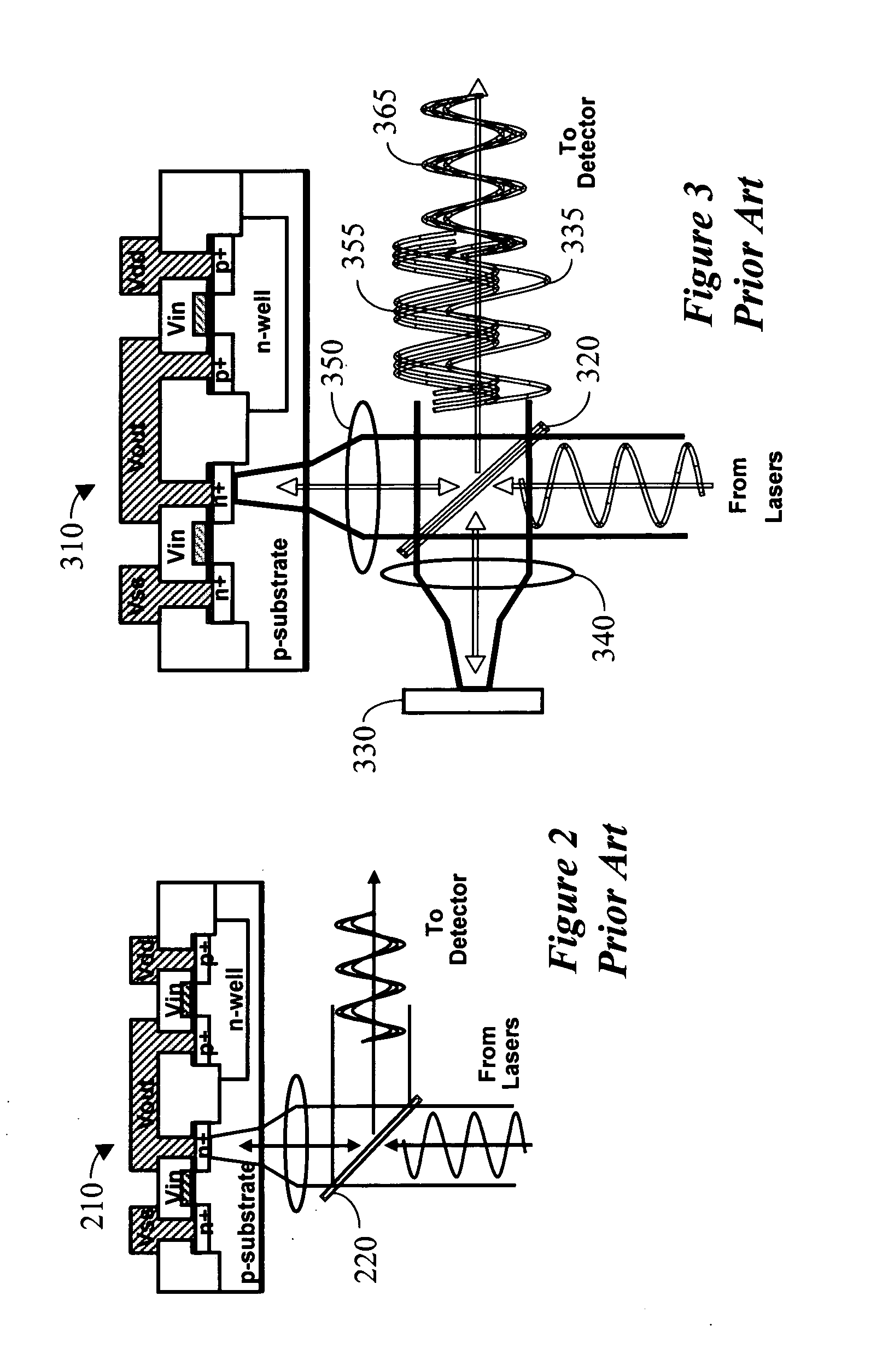Laser probing system for integrated circuits
- Summary
- Abstract
- Description
- Claims
- Application Information
AI Technical Summary
Benefits of technology
Problems solved by technology
Method used
Image
Examples
Embodiment Construction
[0043] An embodiment of the invention will now be described in details with reference to FIG. 6 and, for illustration purposes, it will be depicted in a manner highlighting differences from the system of FIG. 1. Most notably, in this embodiment of the invention a continuous wave (CW) laser source is used, rather than the pulsed laser source. Using a CW laser source reduces the overall cost and complexity of the system. Of course, as noted above, for laser probing of today's integrated circuits a high temporal resolution is needed, which led to the use of mode-locked lasers. In this embodiment, however, the CW laser is used in conjunction with a very wide bandwidth differential amplifier and a data acquisition arrangement to achieve the desired temporal resolution. Additionally, the system is capable of providing other information that does not necessitate temporal resolution. Other major differences include pointing the reference and the probing beam as the same location on the DUT,...
PUM
 Login to View More
Login to View More Abstract
Description
Claims
Application Information
 Login to View More
Login to View More - R&D
- Intellectual Property
- Life Sciences
- Materials
- Tech Scout
- Unparalleled Data Quality
- Higher Quality Content
- 60% Fewer Hallucinations
Browse by: Latest US Patents, China's latest patents, Technical Efficacy Thesaurus, Application Domain, Technology Topic, Popular Technical Reports.
© 2025 PatSnap. All rights reserved.Legal|Privacy policy|Modern Slavery Act Transparency Statement|Sitemap|About US| Contact US: help@patsnap.com



